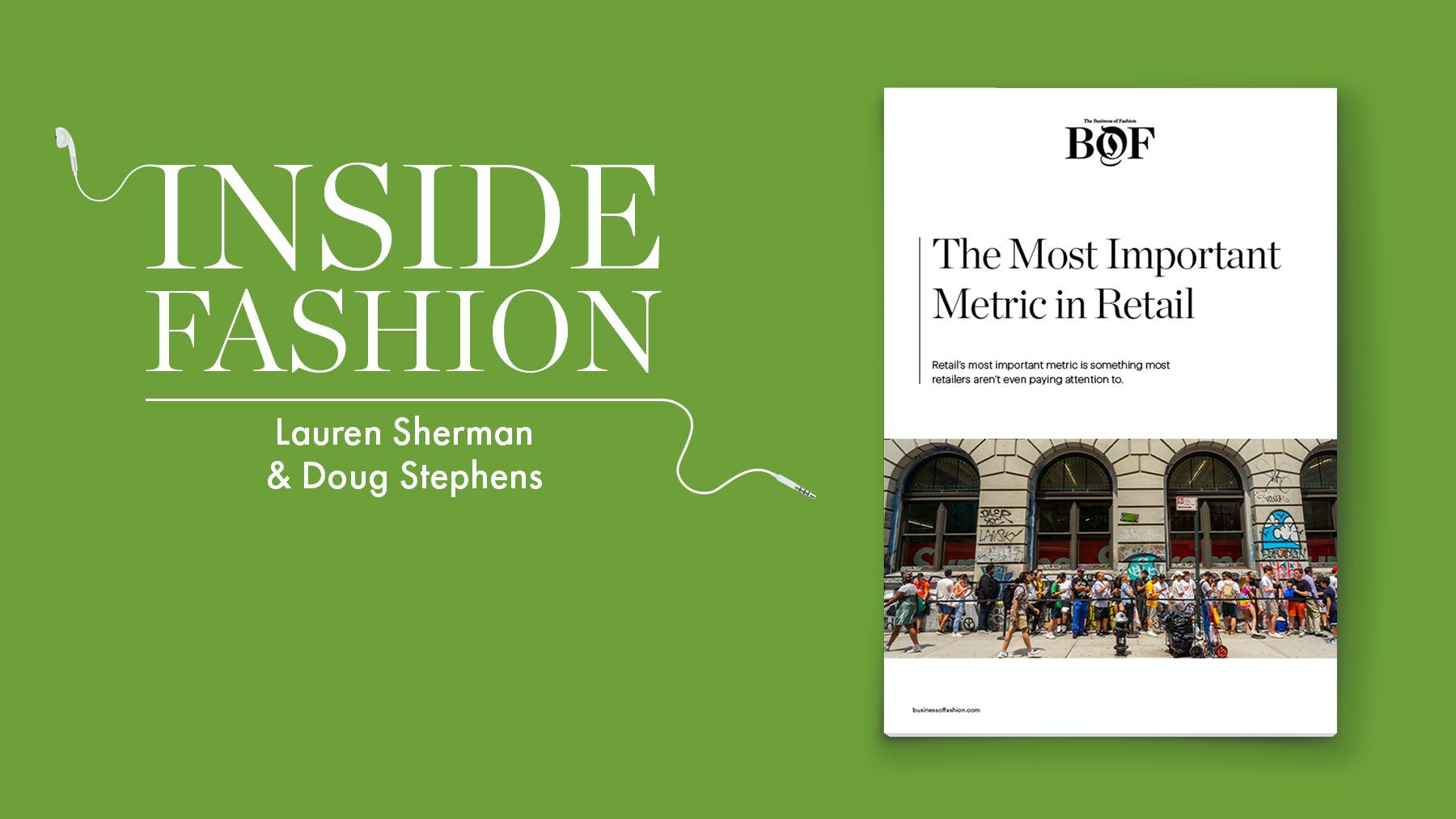
To subscribe to the BoF Podcast, please follow this link.
In a world where brands are at once battling crowded digital space and growing their online presence, what is the purpose of brick-and-mortar stores? And what does “success” look like?
For retail futurist Doug Stephens, the answer lies not in the old-school favourite of comparable same-store sales (the revenue generated in a retail location relative to the revenue generated in the same place in a previous, similar accounting period) but in measuring a store’s media value. A brick-and-mortar store is a media channel in its own right, where retailers can make the most of visitors’ time and attention with immersive, engaging experiences that promote a brand story.
From the agora of Ancient Greece to Facebook, a communication platform is only powerful if it’s where masses of people flock. “Digital is the new campfire that we all gather around,” Stephens said.
However, online platforms aren’t the end-all solution. The digital content space has become overcrowded and full of noise, with digital advertising offering diminishing returns and meaningful impressions becoming harder to gauge.
At the same time, there is a disconnect between the evolving landscape of digital marketing and e-commerce and the stagnation of brick-and-mortar retail models. “Most of the retail that we see around us today is the product of a pre-internet world,” Stephens said.
To unpick this idea further, BoF Chief New York Correspondent Lauren Sherman held a live conversation with Stephens, available exclusively for members of the BoF Professional community. Some of the key points discussed included:
Why Store Media Value Is Important:
- Store media value is about tapping the potential of a physical retail space to be an immersive, tangible and powerful experience for every visitor who walks through the door, creating a positive feeling about the brand.
- Unlike the questionable engagement of, say, someone watching 10 seconds of an ad on Youtube, visitors to a physical store are engaged with their surroundings in a way that is far more immersive and prolonged than any sponsored content online.
- There is also a halo effect. Increased online sales in a region often correlate with the presence of a physical store nearby.
- By creating an enticing experience, retailers incentivise customers to go out of their way to visit. That means retailers can choose more off-piste — and often less expensive — locations. “If it’s that amazing,” Stephens said, “you could build it in a sewer system.”
How to Measure Store Media Value:
- To help determine store media value, brands should look at a store’s net promoter score (NPS is a customer’s willingness to recommend a brand to others) and quantitative data such as foot traffic and hang time. It is important to gauge the sentiment of visitors and loyal customers alike.
- Within the company, retailers should put a dollar figure on every visitor’s impression, in turn evaluating the quality of impressions (both positive and negative).
- For investors and analysts, comparable store sales are still important, so measurements of store media value are probably best shared internally, rather than featured in the headlines of quarterly reports.
Examples of Smart In-Store Media
- For the most part, new-age, digitally native labels with a strong brand story, such as Glossier, have an intuitive grasp of the balance between product and experience in physical stores.
- Sonos and Nike, with their emphasis on technical innovation as a competitive selling point, have used retail space well.
- Similarly, brands such as Bonobos and Sneakerboy have adopted a showroom model: customers can view and try on merchandise but they leave empty-handed, their purchases fulfilled by quickfire delivery instead.
How to Make Your Store a Media Property
- To ensure largely positive experiences among store visitors, break down the customer journey into moments and micro-moments, always with the five elements of a remarkable experience (surprise, uniqueness, personalisation, engagement and repeatability) informing decisions.
- Integrity of product remains important, but the experience around the product has never meant more to the consumer. Unlike the product itself, Stephens argues, “experience is a really difficult thing to reverse-engineer.”
Subscribe to BoF Professional for unlimited access to BoF articles, plus exclusive benefits for members. For a limited time, enjoy a 25 percent discount on the first year of an annual membership, exclusively for podcast listeners. Simply, click here: http://bit.ly/2NZTAmY, select the Annual Package and use code PODCAST2019 at the checkout.
To contact The Business of Fashion with comments, questions, or speaker ideas please e-mail podcast@businessoffashion.com.



